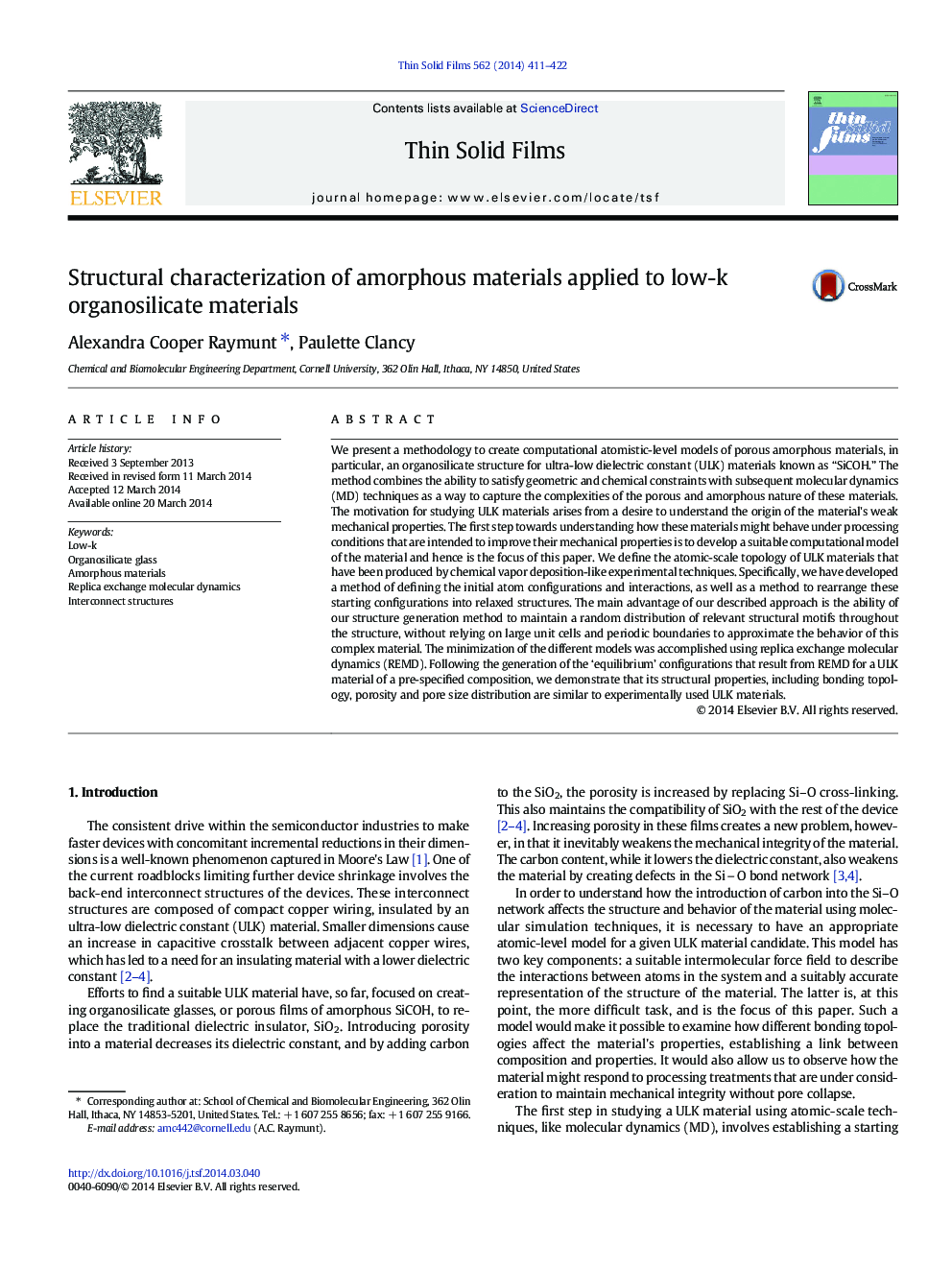| Article ID | Journal | Published Year | Pages | File Type |
|---|---|---|---|---|
| 1665210 | Thin Solid Films | 2014 | 12 Pages |
•Method for creating a model of a low dielectric constant organosilicate material•Method of defining porosity in an atomic-scale material•Method to rearrange starting configurations into relaxed structures•Minimization of structure accomplished using replica exchange molecular dynamics•Model's structural properties agree with experimentally used CVD-type materials.
We present a methodology to create computational atomistic-level models of porous amorphous materials, in particular, an organosilicate structure for ultra-low dielectric constant (ULK) materials known as “SiCOH.” The method combines the ability to satisfy geometric and chemical constraints with subsequent molecular dynamics (MD) techniques as a way to capture the complexities of the porous and amorphous nature of these materials. The motivation for studying ULK materials arises from a desire to understand the origin of the material's weak mechanical properties. The first step towards understanding how these materials might behave under processing conditions that are intended to improve their mechanical properties is to develop a suitable computational model of the material and hence is the focus of this paper. We define the atomic-scale topology of ULK materials that have been produced by chemical vapor deposition-like experimental techniques. Specifically, we have developed a method of defining the initial atom configurations and interactions, as well as a method to rearrange these starting configurations into relaxed structures. The main advantage of our described approach is the ability of our structure generation method to maintain a random distribution of relevant structural motifs throughout the structure, without relying on large unit cells and periodic boundaries to approximate the behavior of this complex material. The minimization of the different models was accomplished using replica exchange molecular dynamics (REMD). Following the generation of the ‘equilibrium’ configurations that result from REMD for a ULK material of a pre-specified composition, we demonstrate that its structural properties, including bonding topology, porosity and pore size distribution are similar to experimentally used ULK materials.
